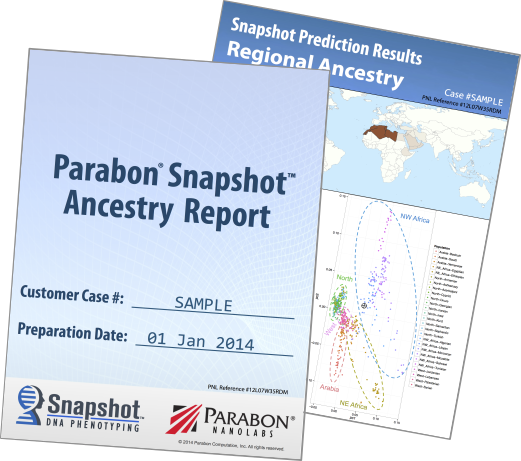Predicting Genetic Ancestry With Snapshot
Scientific analysis of human genomes from different parts of the world has shown that, on a global scale, modern humans divide genetically into seven continental populations: African, Middle Eastern, European, Central/South Asian, East Asian, Oceanian, and Native American1. These genetic divisions stem simply from the fact that these groups were isolated from one another for many generations, and thus each group has a unique genetic signature that can be used for identification. In order to determine a new subject's genetic ancestry, Parabon Snapshot analyzes tens of thousands of SNPs from a DNA sample to determine a person's percent membership in each of these global populations. Other forensic ancestry approaches assume that every individual comes from only a single population, so they can easily be confounded by admixed individuals, but Snapshot allows for contributions from multiple populations, so it can detect even low levels of admixture (<5%).
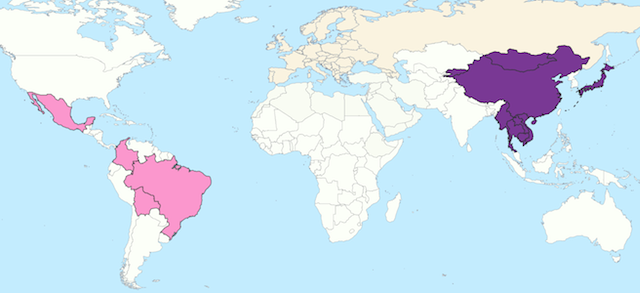
Global ancestry map showing mostly East Asian and Native/South American ancestry, with some European ancestry as well.
After global ancestry is determined, Snapshot's ancestry algorithm investigates which subpopulations (e.g., Northwest vs. Northeast Europe) an individual comes from. This analysis is robust to admixture, such that each piece of continental ancestry can be precisely localized within that continent. For example, the admixed East Asian and Latino example from the global map above was determined to have specifically Japanese, Central American, and Southwest European ancestry, as shown in the map below.
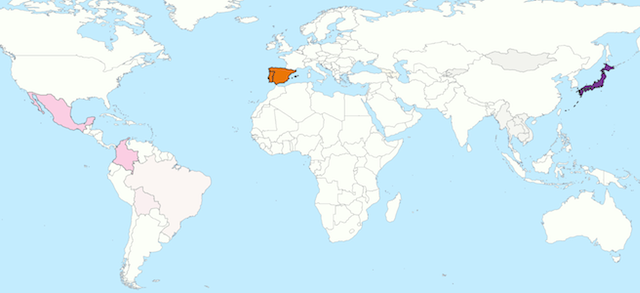
Regional ancestry map showing mostly Japanese, Southwest European, and Central American ancestry.
Using all of this information, Snapshot builds a precise profile of an individual's ethnic ancestry using only his or her DNA.
How Genetic Ancestry Determination Works
Parabon has built a powerful system for determining ethnic ancestry from DNA. Most other forensic ancestry systems use only a small number of SNPs and thus are limited to very coarse populations and cannot detect admixture between populations. Snapshot uses tens of thousands of SNPs across the genome to obtain very precise estimates of ancestry, even for admixed individuals. Parabon's scientists have collected data from many published scientific articles, totalling more than 9,000 individuals with clearly defined ancestry from more than 150 populations around the world, as shown in the map below.
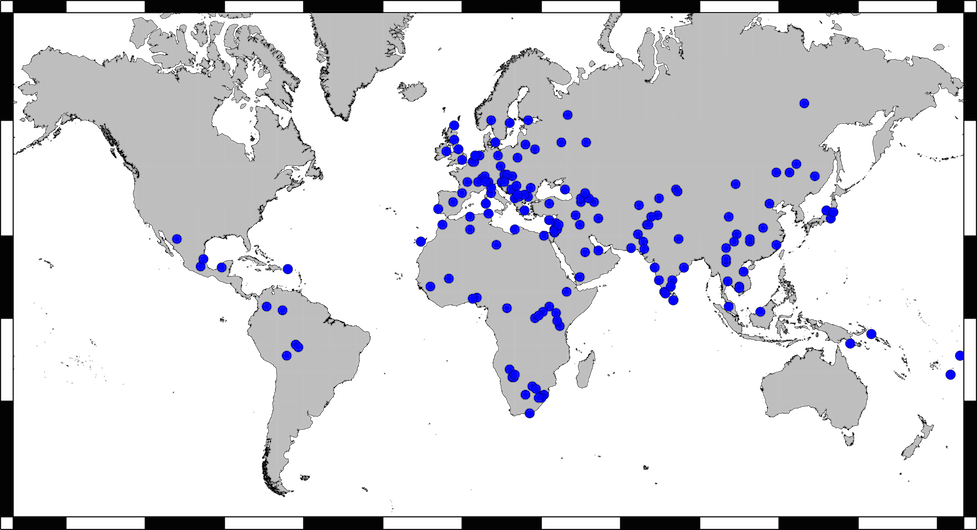
Each point represents a population from which we have obtained ancestry background data. Efforts are ongoing to increase the representation of Native American populations.
Academic research using hundreds of thousands of SNPs from across the genome has shown that human groups generally divide into seven continental populations, which have been established over the past 50,000 years during the migration out of Africa. The 150 populations collected as the ancestry background can thus be divided into these seven continental groups according to their origin.
Snapshot builds on this research by mapping a new person's genome onto these established populations. Our algorithm calculates how similar the new individual's DNA is to each of the background populations, determining which population(s) the person comes from. This allows for contributions from multiple groups, so even small amounts of admixture (<5%) can be detected.
Snapshot takes a similar approach to identifying within-continental (regional) ancestry, although the local populations were identified through empirical analysis performed by our bioinformatics team. Each piece of continental ancestry is partitioned according to its regional ancestry (e.g., if an individual is 50% European and 50% East Asian, the precise origin of each of those pieces will be determined). The person's genome is also plotted against all of the known individuals in each region to show visually where he or she falls.
Below is an example plot for an individual who was determined to be 50% East Asian and 50% Latino. Latino ancestry is a mixture of European and Native American ancestry, so these groups are shown as well.
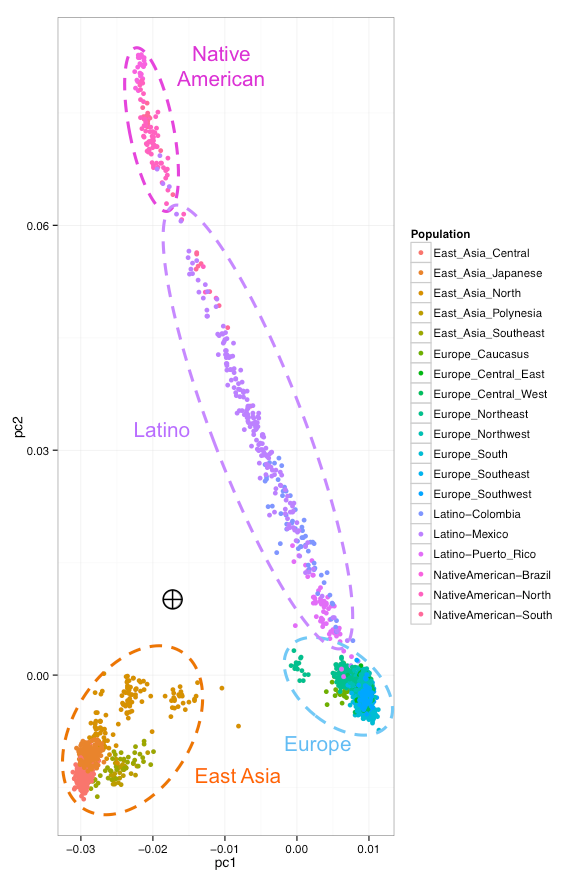
Ancestry clustering diagram; this individual is half Japanese and half Latino.
Ancestry Determination Use Cases
Ethnic ancestry is one of the most informative traits that can be predicted from DNA. In an ancestry analysis, Snapshot will determine an individual's precise genetic origins, as well as whether there is any evidence of admixture (contribution from multiple populations). This information can be used to help identify remains or to significantly focus an investigation by excluding a wide range of possible suspects or even pointing to a very small group.

